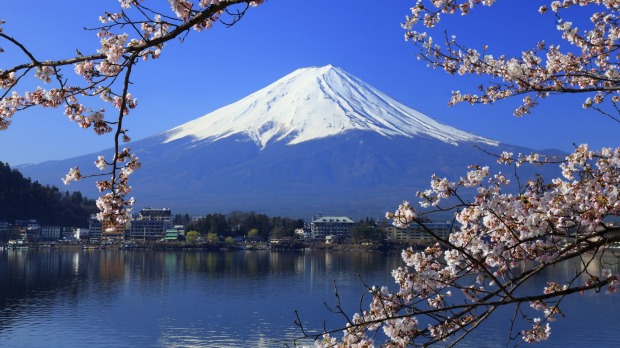
Fujisan has been an elusive goddess, playing "now you see me, now you don't" behind heavy cloud for days. But at the viewpoint at the top of the Kachi Kachi Yama Ropeway, our optimistic guide is determined we admire Japan's most legendary mountain in all her seasonal glory.
"This is the view of Mount Fuji in spring. See the cherry blossoms? Beautiful!" she boasts, holding up a laminated photograph of the snow-capped cone piercing an azure sky, flanked by powder puffs of pastel petals.
"And in fall, such wonderful colours," she says, flicking onto the next visual. "And this is winter, when visibility is the clearest." We nod sagely, impressed.
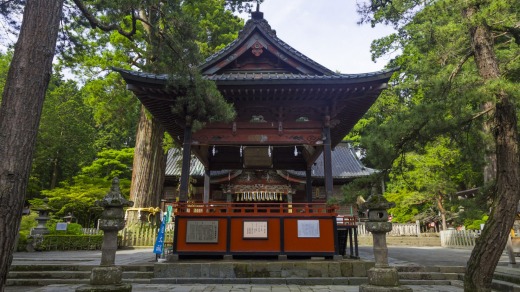
"And now ... " she says, pointing to the grim, misty horizon where, apparently, Fujisan dwells. "... nothing. She's out there somewhere."
To visit Japan during tsuyu, the summer rainy season, can be a frustrating experience, especially when the whole purpose of your visit is to celebrate the country's national symbol. Straddling two prefectures, Yamanashi and Shizuoka, and just 100km south-west of Tokyo, Japan's highest mountain (3776 metres) is one of three "holy mountains", a designated "place of special beauty" and was recently honoured with a World Heritage listing.
Despite being an active volcano (last erupting in 1707) and surrounded by national park and five beautiful lakes, it was not for its natural splendour, however, that Fuji was recognised by UNESCO in June 2013. It was inscribed as a site of cultural heritage, consisting of 25 separate monuments and registered under the title "Fujisan, sacred place and source of artistic inspiration".
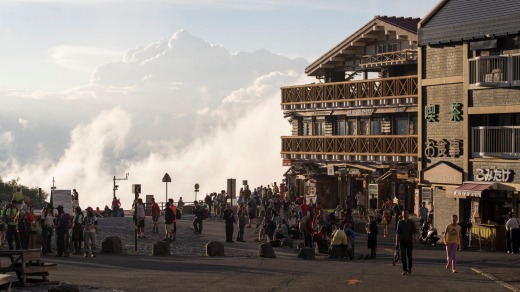
With its near-perfect symmetry, dramatic conical shape and choc-ice topping, Mount Fuji is a landmark of rare beauty that holds a special place in Japanese history and culture. It has been revered as a sacred object since ancient times, when followers of the animist Shinto religion built shrines at its base and summit to appease the goddess of fire, Konohanasakuya-hime, and to quell eruptions. When the prayers seemed to work, the mountain became the centre for worship for the Shugendo sect, an amalgamation of ancient Japanese mountain worship and esoteric Buddhism. From the 14th century, ordinary people guided by Shugendo practitioners began to make worship-ascents of the mountain.
During the Edo period (1603-1867), tens of thousands of devotees of Fujiko (societies dedicated to the veneration of Fuji) embarked on annual pilgrimages during the months of July and August. Climbing the mountain represented rebirth, a journey from kusayama, the secular world of the living, to yakeyama, the world of gods and death at the summit. Pilgrims (doja) traditionally wore gyoi (white funereal apparel) as a symbol of their spiritual rebirth, which they had stamped at shrines en route as evidence of their journey and faith.
That tradition continues today, with many Japanese keen to tackle the six-hour hike to witness the sunrise from its summit, an experience known as goraiko, or 'the coming of the light'. These days, however, the emphasis is less on religion and more on a bucket-list experience, with many Japanese seeing it as an important rite of passage and a symbol of national pride.
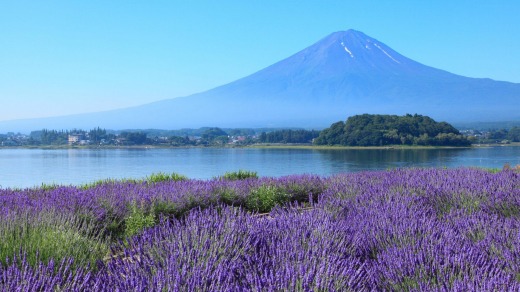
"Fuji wa Nippon-ichi no yama," our tour guide trills as we sit on a bus, passing yet another viewpoint obscured by cloud. "Fuji is No.1 mountain in Japan. This is a popular children's song, every child learns it at school," she tells us proudly. "But today, no Fujisan. Sorry!"
The volcano has also been celebrated in literature and poetry since ancient times, and was featured extensively in the 8th-century Man'yoshu, the oldest existing collection of Japanese poetry.
It was during the Edo era, however, that Mount Fuji really entered the Japanese psyche, its status raised from religious symbol to pure pop icon. In this period, feudal lords were required to journey from Kyoto to Edo (Tokyo) several times a year, travelling on the Tokaido Highway that passed by Fuji on the eastern seaboard. Along the way, they collected the 19th-century version of mass-produced postcards, exquisite woodblock prints called ukiyo-e depicting towns, landscapes and personalities of the time.
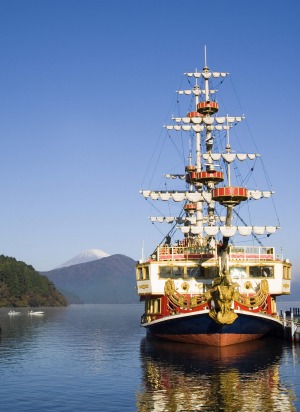
jnto.org.au
Japan Airlines flies from Sydney and Melbourne to Tokyo daily, see au.jal.com/aul/en/. Mount Fuji is about a two-hour drive from Tokyo and can be viewed from three provinces, Yamanashi, Shizouka and Kanagawa.
Hotels offering Fuji views include Hotel Regina in Kawaguchiko, from $136 per person per night (two meals included), see booking.com/hotel/jp/hotel-regina-kawaguchiko and Hotel Tenbo in Izu Nagaoka, from $142 per person per night
OISHI PARK, KAWAGUCHIKO, YAMANASHI Situated on the north shore of Lake Kawaguchiko, this park is widely considered the optimum place to admire Fuji, particularly when the lavender is in bloom in June/July.
KACHI KACHI YAMA ROPEWAY, YAMANASHI Named after a popular children's folktale, this observation deck on top of Mount Tenjo offers panoramic seasonal views of Mount Fuji.
OSEZAKI CAPE, SHIZOUKA This moody peninsula jutting into Suruga Bay affords Fuji views across open water, reminiscent of the seascapes of ukiyo-e artist Hokusai.
LAKE ASHI, HAKONE, KANAGAWA Take a cruise across the lake in the resident pirate ship for lovely distant views of Fuji if the weather is in your favour.
FROM THE TOKAIDO SHINKANSEN When travelling from Tokyo to Kyoto on the bullet train, the mountain appears on the right side of the train, near Shin-Fuji station.